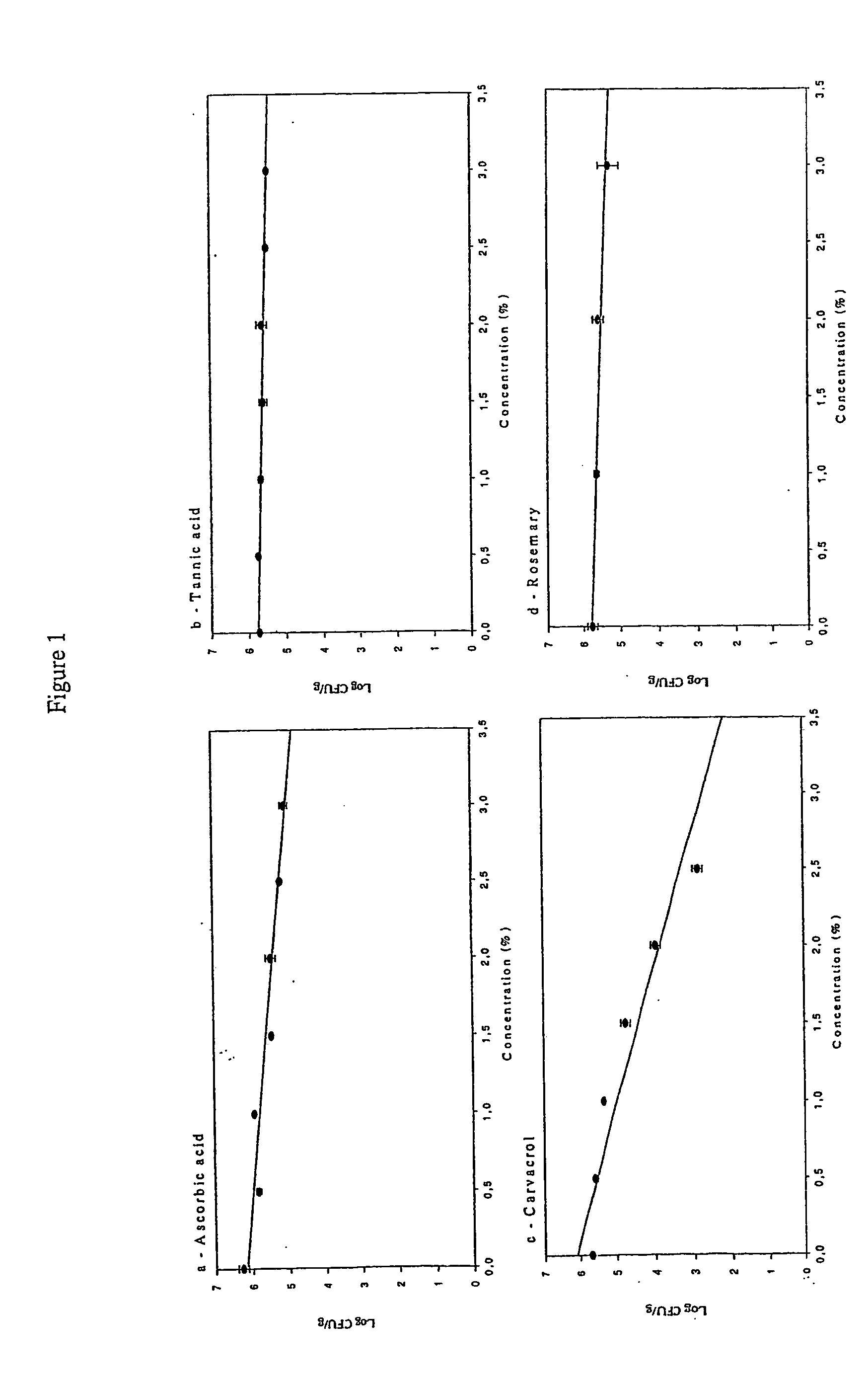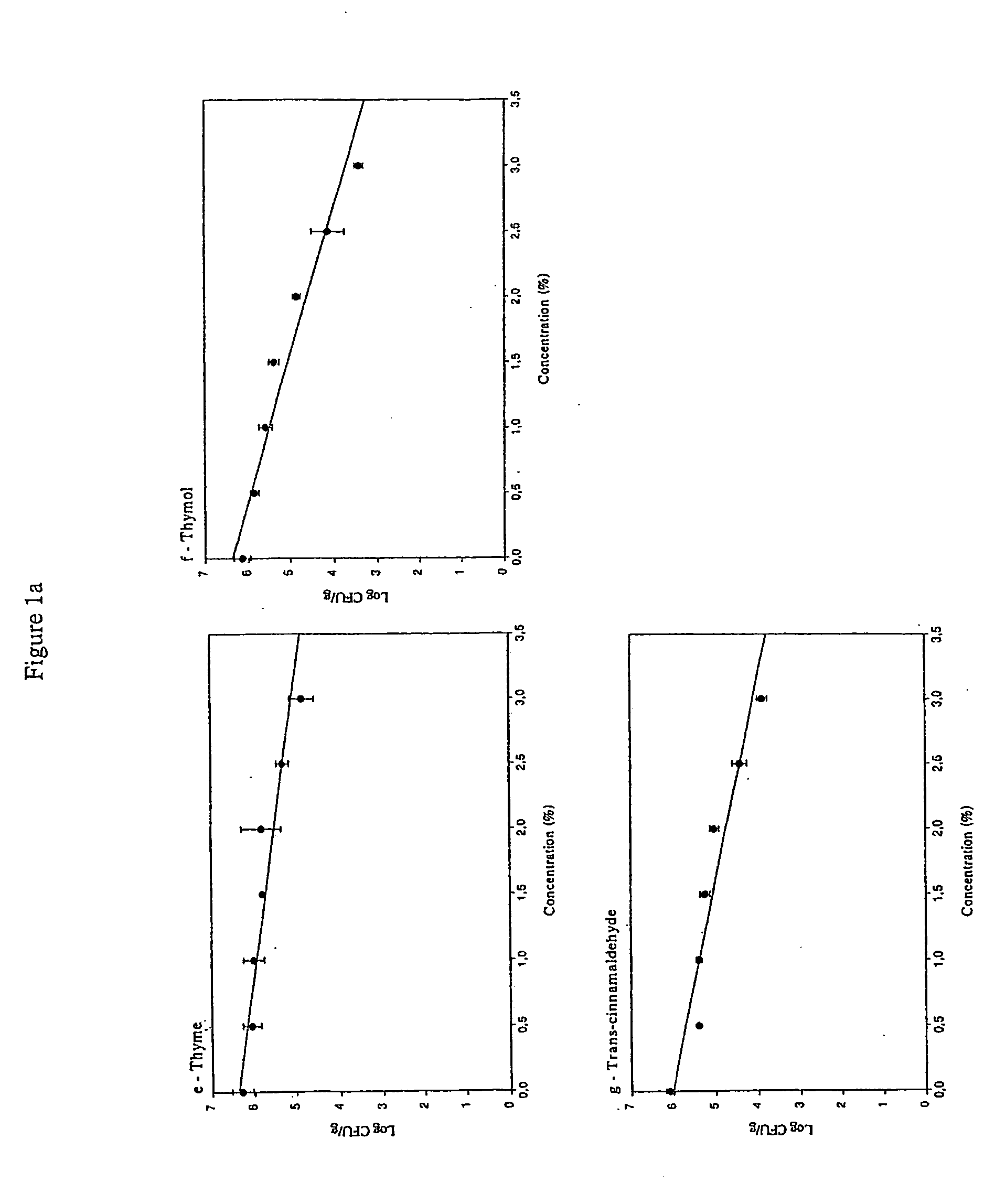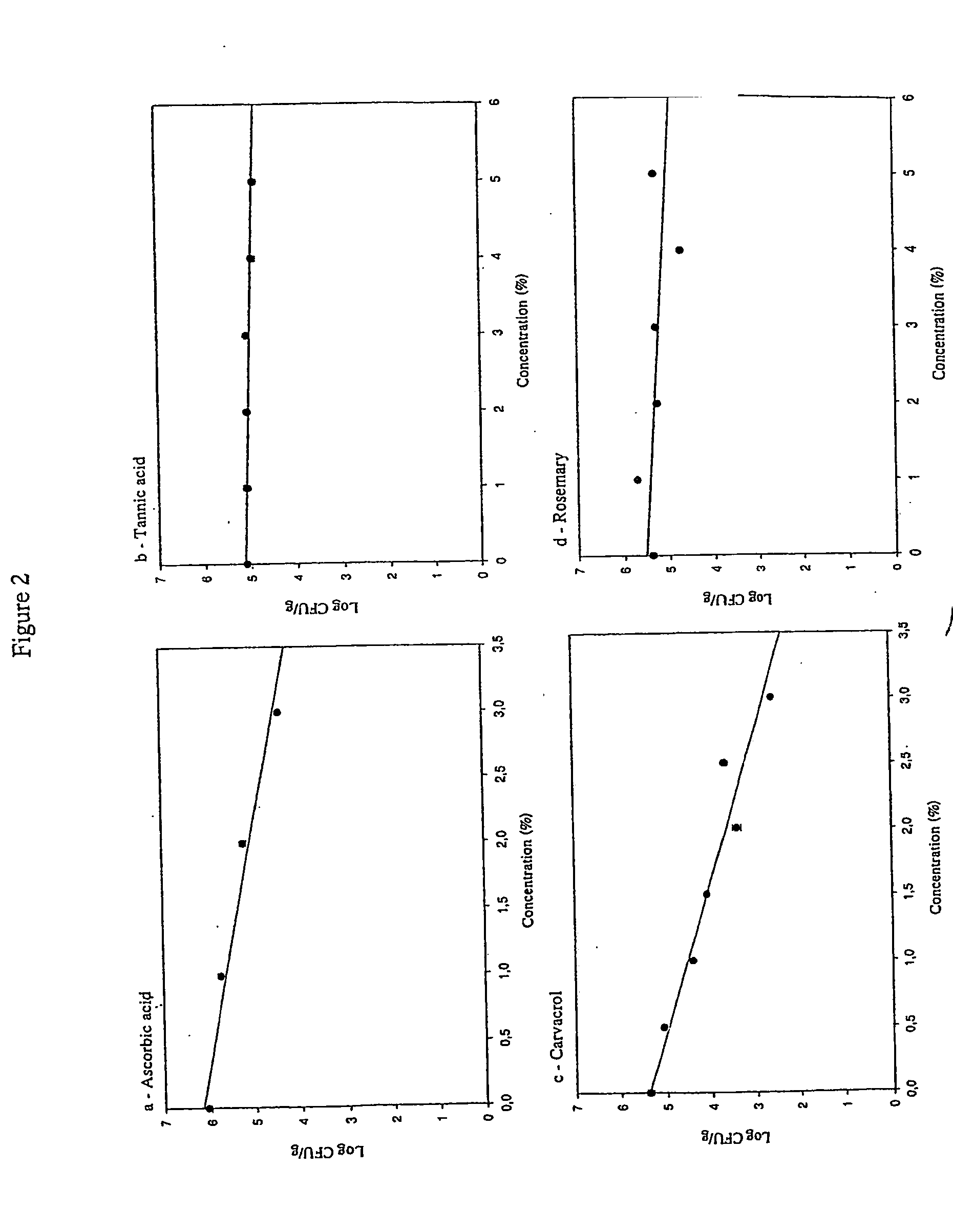Formulations of compounds derived from natural sources and their use with irradiation for food preservation
- Summary
- Abstract
- Description
- Claims
- Application Information
AI Technical Summary
Benefits of technology
Problems solved by technology
Method used
Image
Examples
example 1
IRRADIATION SENSITIVITY OF E. coli AND S.typhi IN GROUND BEEF
Concentration of the Active Compounds
[0137] The concentration ot each active compound added to the meat samples was based on results obtained in a previous experiment. These concentrations represent the minimum inhibitory concentrations (MIC) of the active compounds required to be present in artificial culture media in order to reduce by 1 log the number of bacteria in culture. Six pathogenic and spoilage bacteria, commonly found in meat and meat products, were tested. Mean values of MIC were: 0.5% for ascorbic acid; 0.125% for carvacrol; 0.5% for rosemary; 0.2% for thyme, 0.1% for thymol; and 0.25% for trans-cinnamaldehyde. The concentration used for carnosine (1.0%) was selected from the literature (Sebranek, 1999). The concentrations of BHA (0.01%), BHT (0.01%), EDTA (100 ppm), and tetrasodium pyrophosphate (0.1%) corresponded to the concentrations recommended by the Canadian Food Inspection Agency (CFIA).
1.1 Deter...
example 2
IRRADIATION SENSITIVITY OF E. coli AND S. typhi IN CHICKEN BREAST
2.1 Irradiation Sensitivity in the Presence of Various Active Compounds
[0197] Solutions used for the determination of the irradiation sensitivity in chicken breast correspond to 1 / 30 of the minimal inhibitory concentration (MIC) previously determined for ground beef. For E. coli the concentrations of the stock solutions were 0.88% for carvacrol, 1.15% for thymol, 1.5% for trans-cinnamaldehyde and 0.1% for tetrasodium pyrophosphate. For S. typhi, the concentrations of the stock solutions were 1.15% for carvacrol, 1.6% for thymol, 0.89% for trans-cinnamaldehyde and 0.1% for tetrasodium pyrophosphate. Solutions of each concentration of each active compound were prepared by solubilizing the active compound in 100 ml of a 1% solution of Tween 20 (Sigma-Aldrich, St-Louis, Mo). For example, for the solution of carvacrol (0.88%), 0.88 ml of carvacrol were diluted in Tween 20 (1%) to a final volume of 100 ml.
[0198] Chicken ...
example3
IRRADIATION SENSITIVITY OF E. coli AND S. typhi IN GROUND BEEF IN THE PRESENCE OF TRANS-CINNAMALDEHYDE UNDER MODIFIED ATMOSPHERE PACKAGING CONDITIONS
[0213] The concentration of trans-cinnamaldehyde used in this Example was 0.025% (final concentration), which represents the minimum inhibitory concentration (MIC) of trans-cinnamaldehyde required to reduce by 1 log the number of bacteria in artificial culture media. This value was detennined by testing six pathogenic and spoilage bacteria, commonly found in meat and meat products. Preliminary experiments also demonstrated that this concentration did not affect the organoleptic qualities of ground beef.
[0214] Ground beef samples weighing 450 g were contaminated with working cultures of E. coli or S. typhi in TSB to obtain a final concentration of 105 CFU / g (7 ml of the culture). The ground beef samples containing micro-organisms were mixed for 3 min in a 4L-commercial blender at medium speed (Waring Products, New Hartford, Col., USA)....
PUM
 Login to View More
Login to View More Abstract
Description
Claims
Application Information
 Login to View More
Login to View More - R&D
- Intellectual Property
- Life Sciences
- Materials
- Tech Scout
- Unparalleled Data Quality
- Higher Quality Content
- 60% Fewer Hallucinations
Browse by: Latest US Patents, China's latest patents, Technical Efficacy Thesaurus, Application Domain, Technology Topic, Popular Technical Reports.
© 2025 PatSnap. All rights reserved.Legal|Privacy policy|Modern Slavery Act Transparency Statement|Sitemap|About US| Contact US: help@patsnap.com



